In the world of custom apparel, new printing technologies constantly emerge to meet the growing demands of businesses and individuals looking to create unique designs.
Table of Contents
ToggleOne such revolutionary technique is DTF printing, which has gained popularity for its versatility and ability to produce high-quality prints on various fabrics, especially T-shirts.
In this tutorial, we will explore the concept of DTF printing, its advantages, and the step-by-step process of creating your DTF-printed T-shirt.
Embroidery Digitizing Services
If you are looking for embroidery digitizing services, EMDigitizer is one of the best embroidery digitizing companies. Providing all types of embroidery digitizing Services. I recommend you try digitizing services.
Order NowGet Free QuoteAbout DTF Printing
DTF, which stands for “Direct-to-Film,” is an advanced printing method that allows designs to be printed directly onto a special heat-sensitive film, which is then transferred onto fabric.
Unlike traditional methods, it allows for full-color printing on both light and dark fabrics, including cotton, polyester, blends, and even nylon.
This innovative approach eliminates some of the limitations faced by other printing techniques, such as color restrictions and the need for pre-treating garments.
It is a viable alternative to traditional methods like screen printing and direct-to-garment (DTG) printing.
DTF printing is particularly well-suited for T-shirt printing because it can reproduce intricate designs, vibrant colors, and even photographic images with exceptional detail and clarity.
If you’re interested in learning about the best fabrics and their various uses, check out the blog.
DTF Transfer Printers
When it comes to the DTF transfer printers, it’s subjective and depends on various factors such as your budget, specific requirements, and preferences.
Nevertheless, here are a few popular available options:
Epson SureColor P6000/P8000:
These large-format printers from Epson are widely used in the printing industry and are known for their high-quality output and reliable performance.
Epson SureColor F2100:
Although primarily designed for direct-to-garment (DTG) printing, the F2100 can also be used for DTF printing with the appropriate modifications. It offers good print quality and ease of use.
Epson SureColor P800:
This desktop printer provides excellent print quality and supports a wide range of media.
It may not be specifically designed for DTF T-shirt printing, but with the right settings and modifications, it can be used for this purpose.
Roland DG Texart RT-640:
This is a dye-sublimation printer that can also be adapted for DTF t-shirt printing. It offers high-quality prints and is suitable for various applications.
Materials Needed For DTF Transfer At Home
To print a DTF (Direct To Film) transfer, you will need the following materials and equipment:
Design:
Prepare the design or artwork you want to print as a DTF transfer using the design software. Make sure the artwork is sized correctly and in the desired format for printing.
Check out the list of the best Emdigitizer designs for free and choose your favorite right away.
Design Software:
You will need design software to create or prepare the artwork you want to print as a DTF transfer. Popular design software options include Adobe Photoshop and CorelDRAW.
DTF Printer:
A DTF printer is a specialized printer capable of printing directly onto a film sheet using ink. These printers are designed specifically for DTF transfers.
DTF Film:
DTF transfers are printed on a specific type of film designed for this purpose and the film typically has:
- A white base layer
- And an adhesive layer on top which allows it to adhere to different surfaces when heat is applied.
DTF Powder:
DTF powder is a special powder used in DTF T-shirt printing. It helps to improve the ink adhesion and transfer process. The powder is applied to the design before transferring it onto the desired surface.
Heat Press:
The printed pattern from the DTF film is transferred onto the preferred surface using heat press equipment. The heat press’s application of heat as well as pressure helps to bind the ink to the substrate.
Visit our blog to find out a few simple methods to start a business with a heat press.
Substrate Or Surface:
The substrate or surface refers to the material on which you want to transfer the design. It can be a T-shirt, fabric, ceramic, glass, or any other suitable material.
Cleaning Materials:
You may need cleaning materials, such as isopropyl alcohol or lint-free cloth, to clean the surface before applying for the transfer.
Additionally, you may need adhesive sprays or tapes to secure the film during the transfer process.
It may be helpful to consult with a professional who specializes in DTF T-shirt printing to ensure you have the necessary tools and materials for a successful print.
A Step By Step DTF T-shirt Printing Tutorial
Now that you understand the basics of DTF T-shirt printing, let’s walk through a step-by-step tutorial on how to create your own DTF printed t-shirt:
Step 1: Design Preparation
- Start by creating or choosing the design you want to print on your t-shirt.
- You can utilize graphic design applications like Adobe Photoshop or Illustrator.
- Make sure your design is high-resolution and in the correct dimensions for printing.
Visit the list of free embroidery designs available at our site.
Step 2: Printing Design
- Once your design is ready, print it using a DTF printer. DTF (Direct-to-Film) printers are specifically designed for this T-shirt printing method.
- Load the DTF film into the printer and ensure it is aligned properly.
- Print the design onto the DTF film using the DTF printer.
Visit this article to find out more about the best printing methods and their positive and negative aspects.
Step 3: Adhesive Application
- Prepare a clean, flat surface to apply the adhesive.
- It is recommended to use a vacuum table or sticky mat to keep the DTF film in place during the process.
- Apply a thin and even layer of DTF adhesive powder on top of the printed design on the DTF film.
- Shake off any excess adhesive powder from the film, ensuring only the design is covered.
Step 4: Curing
- Use a heat press machine to cure the adhesive on the DTF film.
- Set the heat press to the recommended temperature and time for curing DTF adhesive (usually around 160-180°C or 320-356°F for 30-40 seconds).
- Place the DTF film with the cured adhesive facing up on the heat press.
- Close the heat press and apply the recommended pressure.
- After the curing process is complete, allow the film to cool down.
Step 5: Heat Transfer The Design
- Prepare your t-shirt by laying it flat on a heat press or other suitable surface.
- Place the cured DTF film with the adhesive side on the t-shirt in the desired position.
- Apply heat and pressure using a heat press machine.
- The recommended temperature and time may vary based on the type of fabric and adhesive used, so follow the manufacturer’s instructions.
Read over the reasons provided in our blog to learn why you need to start a heat transfer business.
Step 6: Peeling And Finishing
- After the transfer process is complete, carefully peel off the DTF film from the t-shirt while it is still warm.
- If there are any areas where the design didn’t fully transfer, place the film back onto the t-shirt and reapply heat and pressure.
- Allow the t-shirt to cool down completely before handling or wearing it.
- Finally, inspect the finished t-shirt for any imperfections and make any necessary touch-ups or adjustments.
DTF Vs DTG Printing
DTF printing involves printing designs onto a specialized film and then heat-pressing them onto the fabric, while DTG printing directly prints.
While they may sound similar, they have distinct differences in terms of the printing process and the final results they produce.
While both methods involve printing directly onto the garment, they employ different techniques and have their advantages and limitations.
DTG Printing:
- DTG (Direct Garment) printing is a well-established method used for printing designs directly onto garments.
- DTG printing also provides high-quality prints with accurate color reproduction, but the color options may be more limited.
- Unlike DTF, DTG printing does not require any intermediate steps, such as film transfers, and offers more flexibility in terms of customization and on-demand printing.
- DTG prints may not be as vibrant on darker fabrics and may require pre-treatment of the garment to ensure optimal ink absorption.
- DTG printing generally requires less setup and has lower production costs compared to DTF printing.
- DTG printing is more suitable for smaller orders or one-off prints, as it allows for easy customization and quick turnaround times.
Ultimately, the choice between DTF and DTG depends on factors such as the desired print quality, fabric type, production volume, and budget.
DTF Vs Screen Printing
DTF offers high-resolution printing and versatility, making it a great choice for intricate designs and smaller production runs. It is a relatively faster and cost-effective method.
On the other hand, screen printing is a durable and versatile option for large-scale production, particularly for simple and bold designs.
The top 10 screen-printing methods that are most likely to succeed in 2023 are shown below.
Here’s a short note comparing DTF and screen printing:
Screen Printing:
- Screen printing is a traditional printing technique that has been used for many years.
- It involves creating a stencil (or screen) of the design on a mesh screen, which is then used to transfer ink onto the printing surface.
- Screen printing is known for its durability and versatility, making it suitable for a wide range of applications, including apparel, posters, and promotional items.
- Screen printing requires separate screens for each color in the design, making it more suitable for larger production runs.
- It is a versatile technique that can be used on various materials, including textiles, paper, glass, and plastic.
Want to start screen printing with vinyl? Go and read a step-by-step tutorial via this blog.
DTF Vs Sublimation Printing
DTF (Direct-to-Film) printing is a method of transferring designs onto garments using a printed film, while sublimation printing involves transferring ink onto a substrate using heat and pressure.
Don’t forget to look at the differences between heat transfer and sublimation printing to determine which will work best for you.
While both techniques achieve excellent results, they differ in terms of the printing process and the materials involved.
Sublimation Printing:
- Sublimation printing uses heat and pressure to transfer ink from a solid state into a gas state, which then permeates the fabric and solidifies, resulting in a permanent print.
- It is primarily used for polyester fabrics, as the ink binds chemically with the polyester fibers, resulting in vibrant and durable prints.
- It requires specially coated polyester fabrics to achieve optimal results, limiting the fabric choices.
- DTF printing requires the use of a special adhesive or powder to create the ink-film bond, while sublimation printing relies on heat and pressure to create the bond.
You are advised to go through these tried and tested methods for making sublimated prints that are impressive.
Pros Of DTF Printing
- Allows for direct printing on a variety of fabric types.
- Provides vibrant and durable prints.
- Supports high-resolution printing.
- Allows printing on dark or colored fabrics without the need for pre-treatment.
- Offers faster printing speeds compared to other textile printing methods.
Cons Of DTF Printing
- Requires the use of a specialized printer and heat press equipment.
- The process may involve more steps and complexity compared to traditional screen printing.
- The initial setup and equipment costs can be higher.
- Some fabric types may require pre-treatment for optimal results.
- Environmental concerns related to the disposal of the release film used in the process.
Conclusion
DTF printing is a game-changer in the world of custom apparel, offering versatility, vibrant colors, and ease of use.
By following the steps outlined in this tutorial, you can create your DTF-printed t-shirts and unlock a whole new level of design possibilities.
Give it a try, and let your imagination run wild with vibrant, high-quality designs on your t-shirts and garments.
DTF printing involves printing the desired design onto a special film using a DTF printer with DTF ink.
- After printing, the film is cured, and a layer of hot melt adhesive is applied to the printed design.
- The film is then transferred onto the fabric using a heat press machine, and the adhesive is fused to the fabric with heat and pressure.
No, DTF printing requires a printer specifically designed for DTF printing that is equipped with specialized printheads and inks to ensure optimal print quality and ink adhesion to the film.
DTF printing can be done on a wide range of fabrics, including cotton, polyester, blends, and even some stretchable fabrics. It is versatile and can adhere to various textile surfaces effectively.
Yes, DTF-printed garments can generally be washed like regular printed garments. However, it’s important to follow the specific care instructions provided by the manufacturer to ensure the longevity of the print.
DTF printing can be cost-effective for small-scale printing as it does not require expensive screens or setup fees like traditional screen printing. It allows for more flexibility in printing small quantities or custom designs.
DTF printing has a few limitations. It may not be suitable for printing extremely fine details or small text due to the thickness of the ink layers. Additionally, it may not work well on certain fabrics with low heat tolerance or unusual textures.
If you have any questions leave the comments or you can visit our social channels for more updates regularly. We provide embroidery digitizing services if you need digitizing services feel free to contact us or email us.

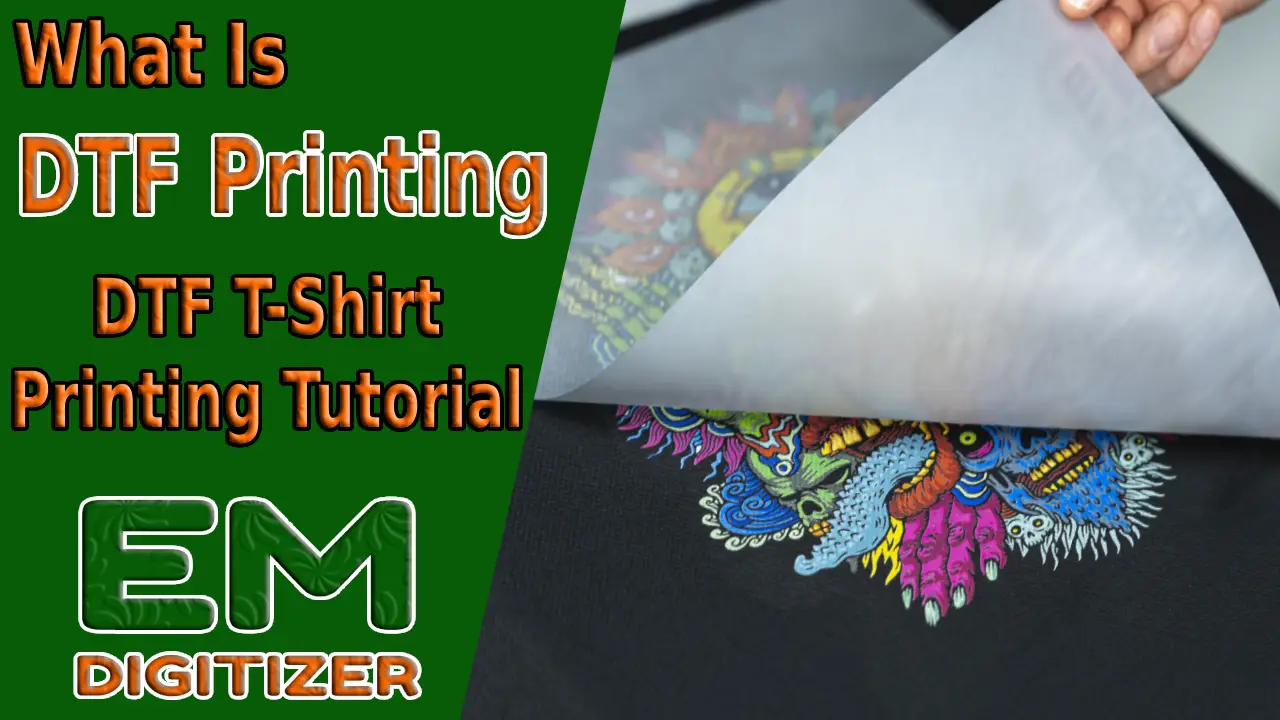
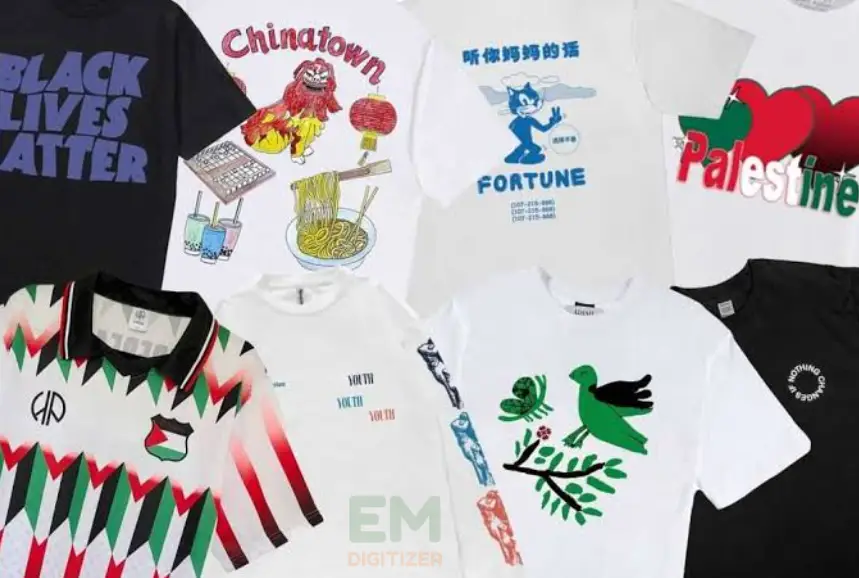
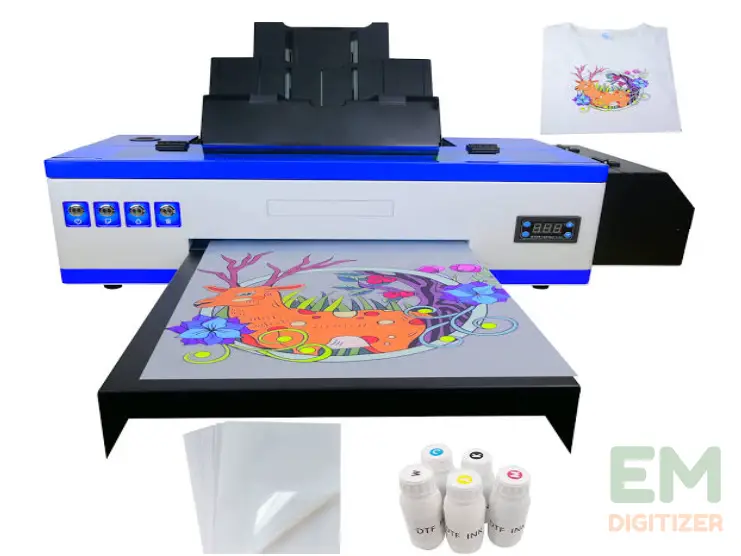

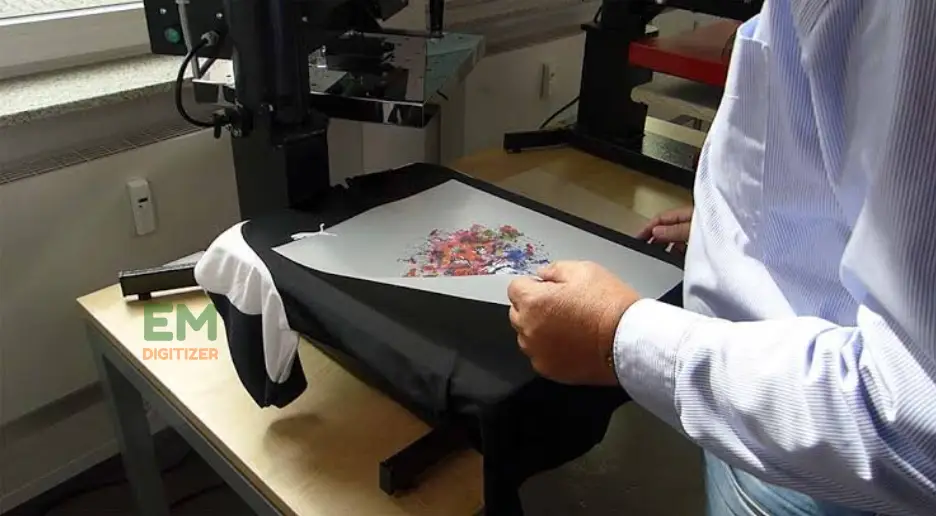
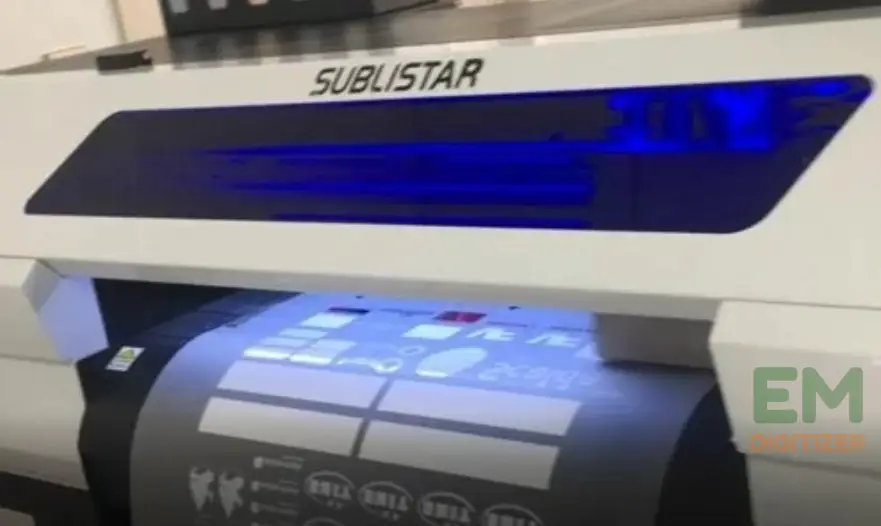
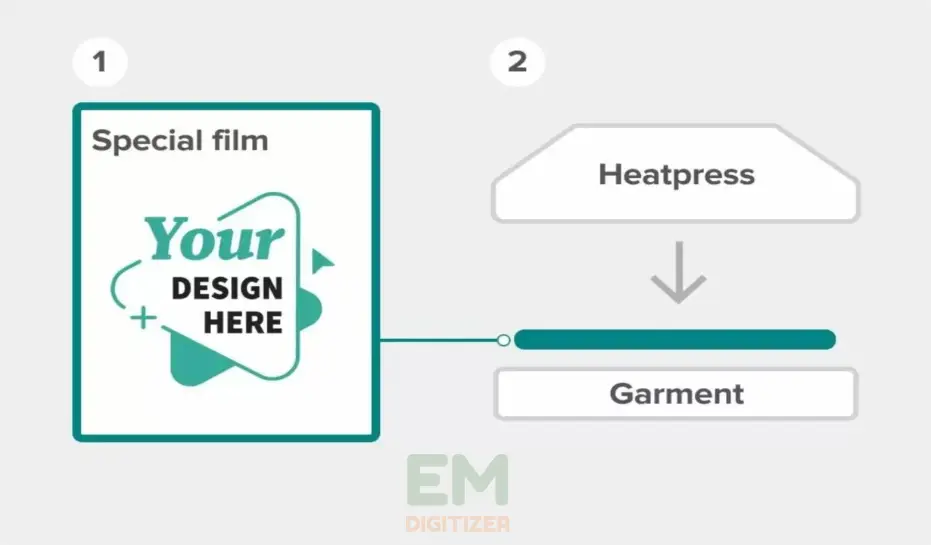
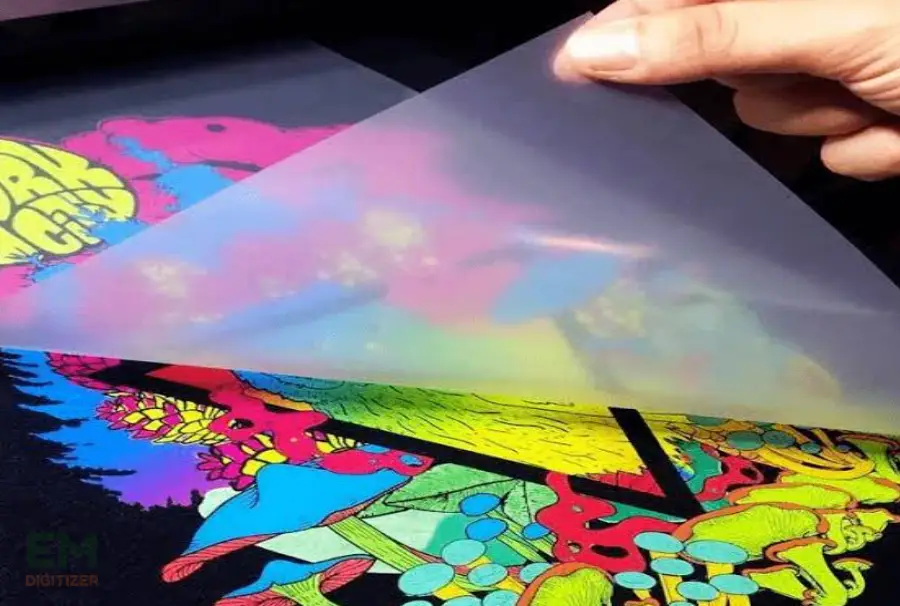
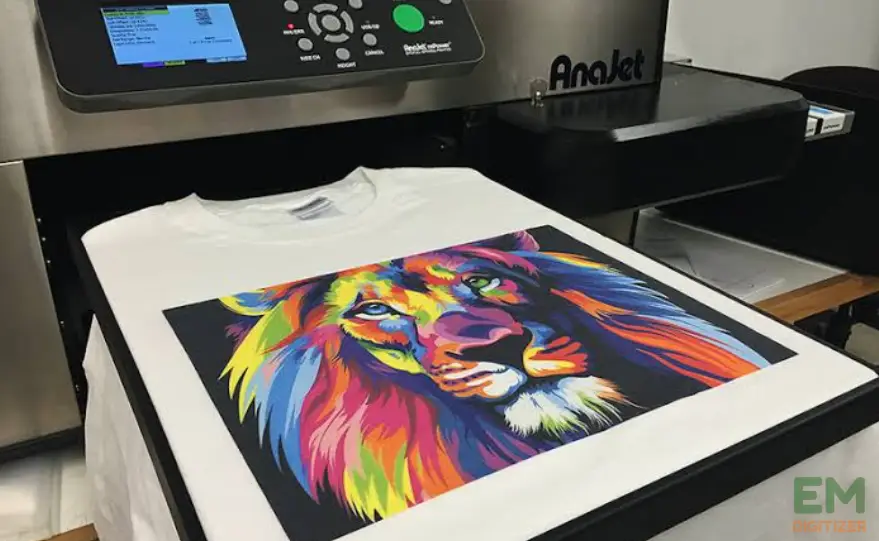
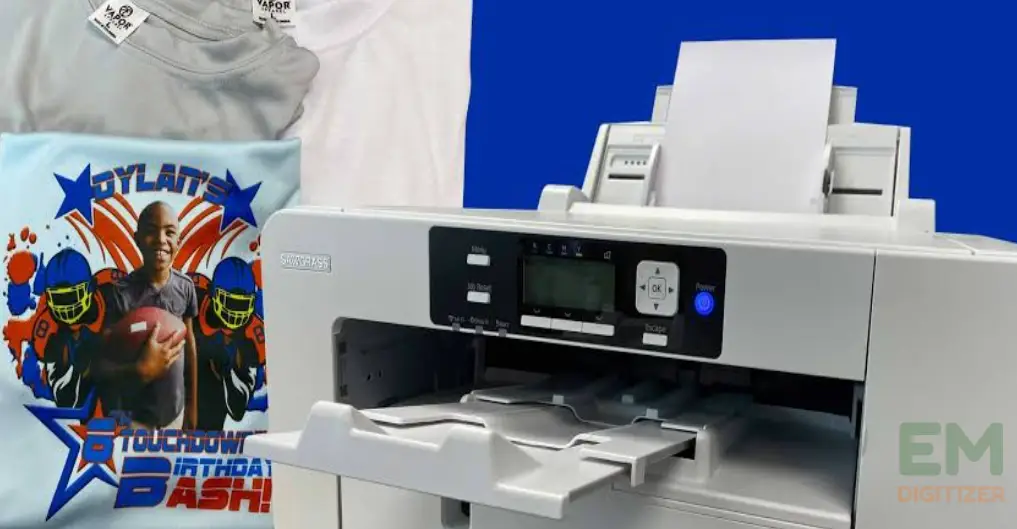


DTF printing, a game-changer! This post dives into the world of DTF printing and provides a helpful tutorial on DTF t-shirt printing. Explore this innovative technique for stunning t-shirt designs
This post provides a fascinating insight into DTF printing and its application in T-shirt printing. I had heard of DTF printing before, but your article provided a comprehensive and informative overview.
I appreciated how you explained the DTF printing process step by step, from preparing the design to transferring it onto the T-shirt. The inclusion of pros and cons helped me understand the advantages and considerations of using DTF printing compared to other printing methods.
Overall, your post has provided a comprehensive introduction to DTF printing for T-shirts. It’s an exciting alternative to traditional printing methods, and your article has given me a solid understanding of the process and its benefits. Thank you for sharing this informative piece. Keep up the great work!